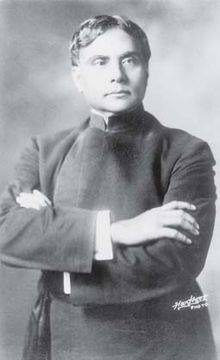The importance and significance of Temple worship in our Spiritual Development :
According to our Vedic literature and especially as Lord Krishna emphasizes in the Bhagavad-Gita (18th Chapter), the structure of the temple represents the human body. The divine power in the Deity is the same divinity in each one of us.
Though evolution has started from Consciousness, human mind which is the first manifestation of Consciousness, has the potentiality to identify with the body and continuously become conscious of everything except Consciousness itself. Mind can think everything because of the power of Consciousness.
You identify yourself as a man or woman of a certain age with certain relationships, responsibilities, knowledge, skills and other attributes. All are limiting themselves at the level of body and mind. But think, the mind and the body work because of whom?
All our physiological systems and mental faculties – are they working because of our breathing and food consumption alone? If we are ready to think, we will find that the power of Consciousness is uniting everything; and that, everything works only with Its support!
Our Great Masters discovered that our mind has the potentiality to unite with and dissolve in – not only the body and worldly things, but the Supreme Consciousness also! When we go to the temple, we believe that the Deity will fulfill our desires and help to solve any crisis we might be facing. When we pray, we believe that the Deity can hear our prayers, can understand our problems and has that strength to help us out. All these beliefs teach us that the Deity is a Conscious Power because the power of Consciousness alone can diagnose, understand and offer solutions.
This Consciousness in the Deity has come through “Avahanam” done by a Poojari; so the “Chaithanyam” in the Deity is actually gained from a living Conscious being (we call such a person a Thanthri or Poojari). This school of rituals teaches us that the Deity in the temple really exists in everyone in the form of Consciousness. In order to uplift and transform our mind from the lower Consciousness to the Supreme Consciousness, we have to practice step by step Sadhana so that the mind can constantly remember and develop inner strength.
According to the Hindu philosophy a temple complex consists of FIVE parts.
First is the Compound wall – this represents our gross physical body. When we go to the temple, men remove their shirts and women wear white dress usually. Removal of shirts implies “refuse to think about bodily and worldly matters”. Wearing white signifies the importance of maintaining positive thoughts always.
The Kodimaram represents our spinal chord. When a person uses his or her spinal chord for doing meditation and higher contemplation (on the top, it is the place of intelligence) then alone he/she can find real celebration of successful life.
(hoisting the flag on the Kodimaram is an indication of celebration and sharing the joy and happiness).
After entering the first gate, the devotees are directed to take Pradakshin in the clockwise direction. While doing this, we have to practise breathing; along with deep breathing recite any Mantra by which the mind can divert its attention from the world to the Lord. When the mind is able to merge in the thoughts of Divinity, one is qualified to enter the inner circle of the temple. The building around the sanctum is called Chuttambalam (Nalambalam, Thidappally etc).
Around the Chuttambalam an array of small lamps can be seen. These lamps represent the divine conscious thoughts. According to our Vedas, the light represents the Consciousness within.
Modern Science teaches us that where there is light there must be heat. We can see the light and also experience the heat. Similarly we can feel the heat in our body. Where there is heat there must be light. So in the light of Consciousness the heat exists. As we feel heat, we should also continuously understand and feel the inner light. When we enter the Chuttmbalam we should constantly think about the inner light by meditating upon the form of the Deity. Then we will reach the Namaskara Mandapam.
There one has to prostrate; that is, surrender the ego completely and feel the absolute Presence. There the mind should unite with and experience the Presence of the Divine Lord in us.
After getting up, look at the Deity, mentally say that “I am your Dasa and whatever opportunities I am given, I will do my duty full of inspiration and involvement; with a smiling face and without any complaints. Whatever comes – good or bad, favourable or not, I will accept it as your Prasadam without complaining, criticizing and judging others. I will silently accept your will.”
After the Darshan one must leave the temple with a smiling face and full of inspiration and deep silence within. This is the guidance provided by our Masters. But unfortunately, majority of our devotees forget that the power of Deity in the temple is the power of Consciousness within us too. Out of sheer ignorance they pray for fulfilling their mundane desires. They misuse the entire system and also misguide the people to follow their foolishness.
Great Acharyas like Shankaracharya always insist that without the real knowledge of spirituality, temple worship and practising rituals will never help in our spiritual progress.
Refer Bhaja Govindam; Bhagavad-Gita, Chapter13, Slokas 1 and 2; Bhagavatham Canto10, Chapter 60, Sloka 53.
Swami Udit Chaithanya





Comments
Post a Comment